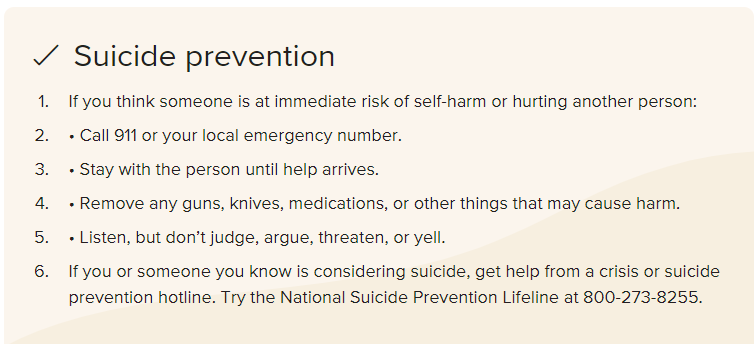As noted by Buscaglia, et al, gabapentin prescribing has increased dramatically in recent years in the US, with both pregabalin and gabapentin often prescribed for off-label indications. Gabapentinoids are often preferred by providers aiming to minimize drug interactions as neither gabapentin nor pregabalin are hepatically metabolized.1 While this presents an ideal attribute, it is important to consider patient-centered characteristics when selecting appropriate therapies. Both gabapentin and pregabalin carry a warning statement for the risk of suicidal ideation and behavior. Since its approval in 1993, this association has been extensively research with gabapentin. Although few cases were reported in Phase III trials, the incidence of reports on suicidal ideation and behavior associated with the drug’s use has increased since that time.
Some attribute this rise to the increase in off-label marketing and prescribing that occurred throughout the late 1990s and early 2000s, including the prescribing of gabapentin for neuropathy and bipolar disorder.4 Presently, gabapentin has labeled indications for the treatment of postherpetic neuralgia (PHN) and partial onset seizures, while pregabalin also has these indications in addition to diabetic peripheral neuropathy, fibromyalgia and neuropathy due to spinal cord injury.
Several lawsuits followed and a citizens’ petition for a black-box warning filed in 2004 by A. Finkelstein cited 258 adverse-event reports of increased suicide related to the medication during the first six months of 2003.
Although a black-box warning was not approved, the FDA collected data on the use of 11 anti-epileptic medications, including gabapentin, between 2005 and 2007 to determine whether there was indeed an increased risk of suicidal ideation or behavior.

The resulting study, published in 2008, was a meta-analysis of 199 trials including 27,863 patients in drug arms and 16,029 in placebo arms.7 Overall, 0.43% of the treatment group patients experienced suicidal ideation or behavior, compared to 0.24% of the placebo patients. The researchers determined that there was a statistically significant increased risk of suicidal behavior or ideation relative to placebo patients (OR: 1.8 [95 % CI: 1.24-2.66]), although only the risk of suicidal behavior was statistically significant (OR: 2.92 [95 % CI: 1.44-6.47]) when examined individually.
The analysis showed consistent trends among all 11 medications. However, gabapentin, carbamazepine, divalproex, levetiracetam, oxcarbazepine, pregabalin, tiagabine, and zonisamide did not show an increased risk of suicidal behavior or ideation when examined individually. The meta-analysis resulted in an FDA added warning for anti-epileptic medications of the increased risk of suicidal behavior or ideation based on the overall incidence between treatment and placebo groups.
Two years after the warning went into effect, several studies were published evaluating the risk of suicidal behavior or ideation with gabapentin use. Olesen, et al, performed a case-crossover analysis of 6,780 registered suicides between 1997 and 2006, based on the National Prescription Register of Denmark, and compared gabapentin and 9 other anti-epileptic medications to carbamazepine monotherapy in treatment-naïve patients to determine if anti-epileptic medications increased the risk of suicide.8 The analysis showed that gabapentin did not increase the risk of suicide (OR: 2.20 [95% CI: 0.83-5.83]) and did not increase risk of suicide compared to carbamazepine monotherapy (HR: 1.27 [95% CI: 0.66-2.44]).
Gibbon, et al, conducted a pharmacoepidemiologic study comparing suicide attempts 1 year before and 1 year after gabapentin was prescribed for 131,178 patients between 2000 and 2006.9 After adjusting for confounders, the team found no increased risk of suicide attempts with gabapentin and found a statistically significant decrease in suicide attempts in patients with bipolar disorder, major depressive disorder, and “other psychiatric disorders.”
Patorno, et al, led a study comparing the risk of attempted suicide, composite of attempted or completed suicide, and composite of attempted or complete suicide or violent death associated with starting anti-epileptic medications compared to topiramate for the primary endpoint and risk of attempted suicide compared to carbamazepine for the secondary endpoint.10 In the adjusted analysis, there was a statistically significant increased risk in every study category with gabapentin use compared to topiramate and a statistically significant increased risk of attempted suicide with gabapentin compared to carbamazepine in patients with epilepsy or seizure disorder.
Since 2010, additional studies have evaluated the risk of suicidal behavior with gabapentin. Pugh, et al, performed a retrospective analysis in 2012 of antiepileptic use in veterans aged 65 and older and found a statistically significant increased risk of suicidal behavior (suicidal ideation, suicide, or self-inflicted injury) with gabapentin use compared to no antiepileptic use.11
In 2018, Leith, et al, evaluated the risk of suicidality (self-harm or suicide attempt) with gabapentin compared to lithium in patients with bipolar disorder and found a statistically significant risk of suicidality with gabapentin compared to lithium in their propensity score-matched analysis.
Although multiple research teams have evaluated the risk of gabapentin and suicidal behavior, the contradictory data, multiple comorbidities that influence suicidal behavior, and likely underreporting of suicidal attempts complicates the potential association with gabapentin and suicide behavior. With this in mind, providers are encouraged to exercise caution, carefully assessing behavioral health comorbidities prior to initiation as well as frequently monitoring throughout the course of treatment.